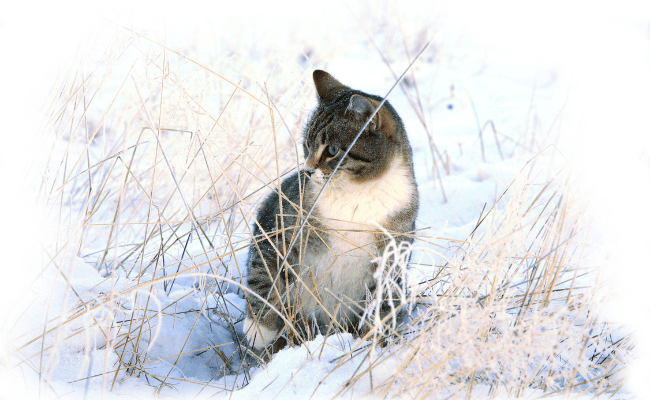Here are tips for caring for unowned, community cats in snow and cold temperatures:
- Remember to knock on the hood of your car before starting it. Cats climb into engines for warmth and protection.
- Community cats can get snowed in, so it is important to remove snow from all entrances and exits to their shelters. Shovel regularly to stay ahead of the snowfall.
- Avoid using salts and chemicals that are designed to melt snow near your cat colonies. They can be toxic when licked off paws or ingested from melting puddles and can hurt a cat’s paw pads.
- Cold weather increases a cat’s energy and nutritional needs. Provide extra water to prevent dehydration and replace it often to keep it from freezing. Learn more about food and feeding stations.
- Provide plenty of dry food in addition to wet, as wet food will freeze in subfreezing temperatures.

- Provide shelters to keep the cats warm:
- Use storage bins (like Rubbermaid ®) that are lined with solid insulation, and cut out a doorway to create an instant shelter. Find more info about building a winter shelter.
- A cardboard shelter is better than no shelter. To keep it from getting wet, elevate it off the ground, line with newspapers, and cover the lid with plastic such as a garbage bag.
- Use sheets of plywood to weigh down lightweight shelters made from plastic, cardboard, etc.
- Cats rely on body heat to stay warm, so keep your shelters small for colonies with just a few cats. For larger colonies, provide multiple shelters.
- Because it resists moisture, straw is the top choice for insulation and bedding in your shelter. Avoid blankets, which tend to absorb moisture and freeze.

